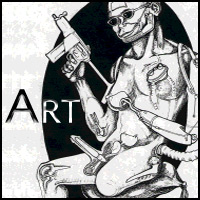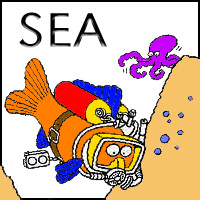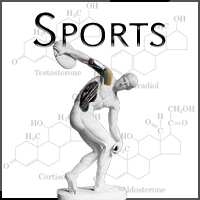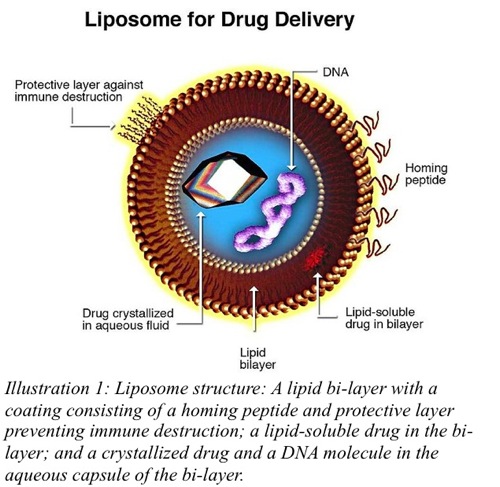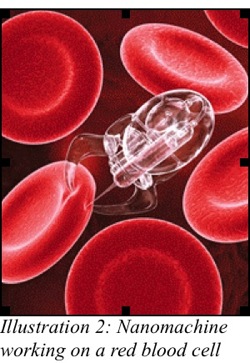
The Invisible MachineJason Grow Around the world, teams of scientists are devising ways of converting us all into cyborgs with devices only 1/1000 of the width of a human hair. While this may sound like the plot of some lame sci-fi novel, it is the future of medical technology via nanotechnology. Nanotechnology involves using man-made objects that are generally between one and one hundred nanometers in size[1]. A nanometer is one-billionth of a meter, and the head of a pin is roughly one million nanometers across. While nanotechnology is still in its infancy, many applications of it, such as cancer treatment and vaccine enhancement, are already nearing approval for human use, and many more prospects of nanotechnology are in development. However, as with any new technology, there are possible dangers involved in its use. The current applications, future prospects, and potential dangers of nanotechnology in humans are all topics of interest to mankind as we forge ahead in this field of incredible potential. Nanotech is a relatively new field of science, where the tools and methods of utilizing it are still being developed. While nanotechnology has a plethora of engineering applications, we will limit our focus to biological applications. The term cyborg, as was first coined by Manfred Clynes, refers to any organism that has man-made integration, be it an artificial limb or a man-made vaccine that permanently alters the immune system. By this definition, all forms of nanomedicine create cyborgs because all forms of nanotechnology are constructs of man. The three major applications of nanotechnology nearing clinical trials in humans are the use of engineered nanoparticles to identify and treat cancer; using engineered capsules called liposomes to enhance drug delivery; and using engineered nanoparticles to enhance the effectiveness of vaccines. Cancer treatment using nanotechnology is being developed by constructing nanoparticles that consist of a silica core coated in gold and then coated in a ligand colloid[2]. The ligand colloid is an array of molecules that can be customized to ensure the gold nanoparticle gets to where it needs to go (the tumor or cancer cells, in this case)[3]. The gold nanoparticle is coated in polyethylene glycol, which helps it avoid detection by the immune system so it isn't intercepted en route to its target, and it is also coated in molecules that will bind to receptors that may be overexpressed in cancer cell membranes. Once the cell is coated in gold nanoparticles, it can either be detected or destroyed by absorbing light from an external source. At different thicknesses, gold can either scatter or absorb varying frequencies of light, including infrared, which passes harmlessly through tissue. If the gold nanoparticles are designed to detect cancer, the infrared light scattering can be read and the cancerous cells can be located. If the gold nanoparticles are designed to destroy cancer, the infrared light can be used to heat the gold nanoparticles, which will in turn heat the cell it is bound to, killing it[4]. The gold nanoparticles are composed of non-bioactive materials coated in molecules normally encountered by cells, so they should pose little to no health risks. This targeted cancer treatment would be a vast improvement over current methods, which are non-targeted and can have adverse affects on healthy tissues.
Much in the way that nanotechnology is used to target cancer cells, nanotechnology can also be used to target tissues for treatment with medicine. Using liposomes (tiny vesicles made from the same phospholipids cell membranes are made from) and archaesomes (special liposomes made from phospholipids unique to archae), a drug or gene, in the case of gene therapy, can be safely protected and transported to specific tissues(figure 1). Doctor M. Reza Mozafari of Massey University, New Zealand describes active targeting strategies: “The atypical conditions of cellular microenvironment and other physiological characteristics, such as local temperature increase in inflamed organs, can also be exploited to obtain accelerated bioactive release at a specific target by engineering particulates that are sensitive to these microenvironmental conditions[5].” To this end, the liposome or archaesome can be incorporated with structures that will break down under certain temperature or pH conditions and release its contents. Similarly, suppose an infected cell secretes a substance not normally produced in healthy cells. A liposome/archaesome incorporated with structures that react with the secreted substance will breakdown the liposome and release the drug. In this way, the release of the drug is restricted to the immediate area of infected cells. Since liposomes and archaesomes are derived from naturally ingested material, there should be no health risk from them. In addition, targeted medication allows for lower dosages and reduced side affects. Instead of bombarding the body with a large dosage of medication hoping some of it will diffuse to the intended target, smaller discrete doses will work just as effectively. At the same time, less medication affecting unintended tissues will result in reduced or even eliminated side affects. This would undoubtedly be a huge leap forward in pharmaceutical safety, and would be especially desirable in cases where the drug is very costly to produce. The third use of nanotechnology nearing clinical trials is the use of archaesomes as vaccine adjuvants. Studies involving mice injected with archaesomes containing antigens elicited a stronger immune system response than the standard vaccine or a vaccine enhanced with an alum adjuvant, especially in regards to memory response. According to a report by Girishchandra B. Patel and Wangxue Chen of the Institute for Biological Sciences, National Research Council of Canada, “Archaesome vaccine-induced primary antibody responses were sustained for close to a year, and were amenable to strong memory recall upon antigen alone boost. In contrast, the primary antibody titres induced by alum-adjuvanted vaccine had declined significantly by 200 days post-immunization, and the antibody memory boost was comparatively weaker[6].” This research shows that archaesome incorporation may lead to more potent, longer lasting vaccines. The research into nanotechnology is increasing every year, and while current research may lead to medicinal breakthroughs, it pales in comparison to what is possible with nanomachines. Proteins are the workhorses of the cell, responsible for everything from the duplication of DNA to establishing the voltage gradient that allows our nerves to synapse, to forming the muscle fibers that allow us to move. Nanomachines can serve as a type of protein factory that can function inside cells, constructing polypeptide chains that will self-assemble themselves into proteins that can have any number of functions.
Suppose that an individual is unable to metabolize lactose, making them lactose intolerant. A nanomachine capable of constructing galactosidase(the protein enzyme that allows us to metabolize lactose) could be administered, and voila: no more problems eating dairy. The applications are almost endless. Anti-freezing peptides produced by nanomachines could prevent hypothermia in arctic environments. Nanomachines capable of producing essential vitamins and nutrients could be administered to underdeveloped nations and eliminate malnutrition. Nanomachines that enhance tissue repair could be administered to accelerate recuperation following a severe injury, such as a third degree burn, car accident, or invasive surgery. One possible use of nanomachine structures as a telecommunication device involves applying nanomachine clusters that adhere directly to the small bones of the inner ear and stimulate them when a signal is received, allowing for the host to receive audio transmissions that can't be intercepted or tapped. Similarly, photoreceptor nanomachines can bind to optical nerves, restoring sight to people with damaged retinas, or even conferring extra sensory vision by allowing the individual to perceive light outside of the normal visible spectrum. Nanomachines can eventually be used to develop synthetic organs and tissues, using a bottom-up construction approach. Just as organs are made of tissues, which are made of cells which are in turn made of organelles, so too can nanomachines be used to synthesize tissues by coordinating cell growth, eventually forming custom-made organs[7]. Nanomachines capable of signal transmission can be used to track individuals, which has applications both for humans and for wildlife populations. Instead of having to sedate an animal in order to tag it, ecologists would simply have to administer the nanotransmitter perhaps via a dart injection, or seeding the designated animals food with the nanotransmitter. Firefighters can be tagged, so if a flaming building collapses the firefighter can be located quickly. Nanotransmitters also represent the ultimate in identification systems. Imagine walking up to your car, house, or any restricted area and the doors all unlock, because your nanotransmitters have sent signals to the doors identifying you as cleared for entry. Anyone with a sense of imagination can devise novel applications of these organic factories. As with any factory, these nanomachines will wear down and fail over time. This expected problem can be used as a safety measure, in case the nanomachines contain private or classified information (such as the ID nanotransmitters), but it can be resolved by either administering a fresh dose of nanomachines, or developing repair nanomachines. Also like any factory, these nanomachines will require power. Two methods currently being developed include using bismuth antimony telluride alloy to convert heat into electricity, and using bacteriorhodopsin to convert light into chemical energy. Bismuth antimony telluride alloy has been used since the 1950's in various devices to convert heat to electricity and vice versa. Only just recently it has been discovered by researchers at MIT and Boston College that when the environmentally friendly alloy is crushed into nanoparticles and reconstituted, its effectiveness increased by forty percent[8]. This has numerous engineering applications, including energy efficient heating and air-conditioning devices, engine casings that can convert excess engine heat into electricity to extend car battery life, and solar panel improvements. In cells, it allows for a way to charge nanomachines using body heat. Another energizing method involves using bacteriorhodopsin (BR) to convert photons of light into chemical energy. BR is a membrane-bound protein that is used by the species of archae, H. Salinarium, as a means of photosynthesis. The protein changes shape when struck by a photon, and this shape change is used to pump protons out of the cell. When the proton reenters the cell, it does so through a separate transport protein that converts ADP to ATP. This ATP is used as a kind of cellular energy currency that can be used to power mechanisms all over the cell. Aside from powering nanomachines using solar power, this mechanism has several additional applications. As suggested by Jeremy F. Koscielecki, Jason R. Hillebrecht, and Robert R. Birge of the University of Connecticut, the properties of BR “combine to make the native protein useful for making thin-film memories, photovoltaic converters, holographic processors, artificial retinas, associative memories, logic gates, and protein-semiconductor hybrid devices[9].” Not only is the potential of BR incredible, it may even be able to be modified to surpass the form found in nature. Koscielecki, Hillebrecht, and Birge continue, stating “In all cases investigated, however, a genetically or chemically modified form of the protein outperforms the native protein when a systematic study is carried out to identify or create an optimized variant[9].” This could lead to revolutions in solar energy systems, as well as possibly leading to photosynthetic humans! As far as military applications go, nanomachines are frightening in terms of biological weapons potential. Here is but one scenario: suppose you happen to obtain a DNA sample from a global leader, or know their DNA sequence from medical records. Let us then suppose you have a nanomachine that is programmed to self replicate and bind to the alveoli in the lungs. You now have the equivalent of an airborne virus. Suppose you have also programmed this nanomachine to produce lethal toxins when in the presence of this particular global leader's DNA sequence. You now have the recipe for an assassin nanomachine virus that has no symptoms or side affects on anyone but your intended target, and can spread easily throughout a population. You wouldn't even need to get near the target; people who are close to them can spread the nanomachine virus for you. One popular video game series that has explored the possible implications of nanotechnology is the Metal Gear Solid series. It takes place in the near future, where the oil market has collapsed and has been replaced by a war economy driven by conflict profiteering. Military forces have been replaced by better trained and more cost-effective Private Military Companies(PMCs), and everyone settles disputes through them. Developed nations, smaller nations without an army of their own, rebel factions seeking to seize power, and terrorist groups all use PMCs to fight proxy wars. Since the PMCs are only in it for the money, a system is set up by the Pentagon and approved by the U.N. to control conflicts. This system, dubbed SOP, is used to monitor all aspects of combat. PMCs are not allowed to deploy troops unless they agree to use SOP. The system is based on nanomachines, injected into every soldier. These nanomachines monitor everything from heart rate to adrenaline levels to firing accuracy. The nanomachines can communicate with each other, making teamwork smoother and preventing friendly fire. Since the PMCs have no political or ideological stake in the conflict, the nanomachines prevent contract violations, betrayal, and war crimes. The nanomachines also act as identification tools, allowing a member of a particular PMC access to weapons, vehicles, and equipment belonging to their PMC. If the PMC tries to stage a coup or cause civilian casualties, the nanomachines lock them out of the system, preventing the use of any weapons or vehicles. In addition, the location of the PMC troops is leaked to their enemies by their own nanomachines. Another aspect of the SOP system is that it uses nanomachines to secrete adrenalin, other hormones, and neurotransmitters, simulating combat highs and reducing the effects of shell shock. The central plot of the game involves the lead antagonist trying to hijack the system, making his PMC the only military force capable of using weapons. This control would allow him to conquer the world militarily. This is but one, albeit somewhat convoluted example of the possible misuse of nanotechnology. Other than the inherent fears of abuse that such scientific developments can lead to, some other concerns regarding nanotechnology have been expressed. One outcome of nanotechnology is commonly referred to as the 'gray goo' scenario. The term, first coined by Eric Drexler, poses an ecophagic apocalypse brought about by nanomachines. In this scenario, self-replicating nanomachines (the 'goo') have grown out of control, consuming all available matter be it organic or inorganic. This scenario is highly unlikely, primarily because there is no single mechanism in the natural world that can decompose everything. Take a look at nuclear waste, diapers, or Styrofoam containers and it's easy to see how unlikely a single device capable of degrading all matter can be invented. If anything, this scenario could only be brought about with a series of nanomachines, each specializing in decomposing and replicating from a specific material. But that consideration gives this theory more thought than it deserves. Another, much more down-to-earth fear of nanotechnology is that nanoparticles are small enough to cross the blood-brain barrier and interact directly with the brain[1],[10]. This can be a boon for developing treatments for the brain diseases, such as meningitis. However, if nanoparticles can aggregate in the brain, they may have unpredictable effects. The effects of nanoparticles on brain tissue are still unknown. Nanoparticles are also known to be capable of crossing the placental barrier into fetuses[10]. This barrier-crossing is even more unsettling when you consider several products on the market already contain nanoparticles that can break free from the matrix or network they are a part of and can pass though the body into the brain or lungs. Many name brand sunscreens and cosmetics contain nanoparticles, and manufacturers currently are not required to include nanoparticle content information on product labels. A recent report from the German Federal Environmental Agency(UBA) assessed potential risks associated with use of nanoparticles in humans, animals, and the environment. “Biodegradable nanoparticles are metabolized and excreted. However, little is known so far about the behaviour of non-degradable nanoparticles. It has to be assumed that accumulation will take place predominantly in the organs of detoxification. Whether or not a risk may arise from such accumulation of particles in the body has not yet been sufficiently examined[10].” In addition, nanoparticles that do not biodegrade in the environment may agglomerate in the food chain, just as mercury does in fish. Much more research needs to be done in order to properly assess the risks of nanoparticles on our environment. While nanotechnology is still in its formative period, it will undoubtedly become a source of incredible innovation and scientific advancement in the future. But where it has almost unlimited potential, the risks of using this technology are uncertain. If we decide to embrace this technology, we must do so in a prudent manner. As it stands, nanotechnology has the potential to be one of the biggest boons, or one of the biggest mistakes, to be wielded by mankind heading into the future. References and Bibliography
1. Bonsor, K, Strickland, J. How Nanotechnology Works. 1998-2009 HowStuffWorks, Inc. Illustrations:
1. |




